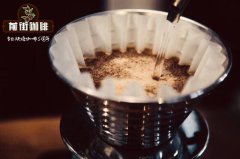What is the difference between Bolivian coffee and Bolivian coffee?

Professional coffee knowledge exchange more coffee bean information please follow the coffee workshop (Wechat official account cafe_style)
Front Street-introduction to Bolivian Coffee
Bolivia is in South America, surrounded by Brazil, Peru, Argentina, Paraguay and Chile. Bolivia is the poorest country in South America. Due to its backward basic conditions and untimely coffee processing and delivery, the quality of coffee has not been greatly improved.
Bolivian coffee is grown at an altitude of 18000 to 2670 meters. Bolivia has a complex terrain, with a peak of Illmani up to 6462 meters high, as well as Lake Titicaca (the third largest lake in South America), the highest and navigable alpine lake in the world at an altitude of 3812 meters, and tropical rain forests provide excellent quality assurance for the growth of coffee.
Bolivia's coffee production is dominated by a smallholder production system, with 23000 small farms ranging in size from 2 to 9 hectares, but unlike other producing countries that do not drink coffee, Bolivia has about 40 per cent of coffee, which is consumed in the form of domestic sales.
The most famous producing area in Bolivia is La Paz, including Caravani, Yungas, Inquisivi and so on.
The main varieties of coffee in Bolivia are Arabica, such as Iron pickup, Kaddura, Cleo, Kaduai and Katim, as well as new varieties of gesha and sl28. The production season is from July to November, most of them are washed coffee beans, only some of them are sun-treated.
Almost all of Bolivia's cultivation is organic, and it is in this primitive and scientific way that the output of Bolivian coffee has declined, but its quality has not declined seriously. Both the aroma of ground beans and the aroma of coffee are obviously strong. Bolivian coffee is impressive with a mixture of flower and fruit aromas without losing its mellowness and balance.
The Rose Summer of Livia, which comes from Las Alasitas Farm of Los Rodrigiez Manor, has elegant aromas of jasmine, full of sweet orange flavor and black tea finish. Las Alasitas Farm
Rose summer in different regions, because of different soil environment and different growers, will show the local unique flavor. The classic floral and citrus flavors of rose summer are presented differently in the strange land of Bolivia.
Knowledge: Bolivia's coffee production is dominated by a smallholder production system, with 23000 small farms ranging in size from 2 to 9 hectares. In particular, about 40% of Bolivia's coffee culture is mainly sold domestically.
In short: Qianjie is a coffee research hall, happy to share the knowledge about coffee with you, we share unreservedly just to make more friends fall in love with coffee, and there will be three low-discount coffee activities every month. The reason is that Qianjie wants to make more friends drink the best coffee at the lowest price, which has been Qianjie's tenet for 6 years!
END
Important Notice :
前街咖啡 FrontStreet Coffee has moved to new addredd:
FrontStreet Coffee Address: 315,Donghua East Road,GuangZhou
Tel:020 38364473
- Prev

African coffee brand recommended Ye Jia Xue Fei water wash good drink lies in the elegant floral bright acid
Professional coffee knowledge exchange More coffee bean information Please pay attention to coffee workshop (Weixin Official Accounts cafe_style) Qianjie-Yega Xuefei coffee introduction Coffee originated in Ethiopia in Africa. In this ancient land, magical fruits affecting the whole world have been bred. When people in many parts of the world do not know what coffee is, Ethiopia
- Next

What are the characteristics of washed Bolivian coffee introduction to the flavor and taste of Bolivian cocoa sun-cured coffee beans
Professional coffee knowledge exchange more coffee bean information please follow the coffee workshop (Wechat official account cafe_style) front street-Bolivian coffee introduces them to help coffee farmers master better planting techniques; they help coffee farmers use better machines and equipment; they educate growers about social responsibility and economics.
Related
- Beginners will see the "Coffee pull flower" guide!
- What is the difference between ice blog purified milk and ordinary milk coffee?
- Why is the Philippines the largest producer of crops in Liberia?
- For coffee extraction, should the fine powder be retained?
- How does extracted espresso fill pressed powder? How much strength does it take to press the powder?
- How to make jasmine cold extract coffee? Is the jasmine + latte good?
- Will this little toy really make the coffee taste better? How does Lily Drip affect coffee extraction?
- Will the action of slapping the filter cup also affect coffee extraction?
- What's the difference between powder-to-water ratio and powder-to-liquid ratio?
- What is the Ethiopian local species? What does it have to do with Heirloom native species?

